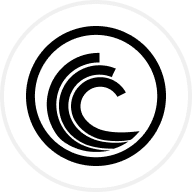IDOL Burn Supply: Exploring Eco-Friendly Traditions and Blockchain Innovations
Understanding the Concept of IDOL Burn Supply
The term 'IDOL burn supply' holds dual significance, bridging the gap between the traditional craft of idol-making and the modern technological practice of token burns in cryptocurrency ecosystems. While these two domains may seem unrelated, they share a common focus on sustainability, value creation, and cultural significance. This article explores both aspects, offering insights into how tradition and technology are shaping their respective landscapes.
Idol-Making: A Traditional Craft Rooted in Heritage
The Cultural and Economic Significance of Idol-Making
Idol-making is a centuries-old craft deeply woven into the cultural fabric of regions like Kumbharasahi in Kendrapara, India. This small community is renowned for its skilled artisans who create intricate idols for festivals such as Durga Puja and Gajalaxmi Puja. These festivals not only celebrate religious and cultural traditions but also provide a vital source of livelihood for approximately 65 families in the area. However, this number has declined from over 100 families two decades ago, underscoring the challenges faced by this traditional craft.
The Shift Towards Eco-Friendly Practices
In recent years, there has been a growing demand for eco-friendly idols made from clay and non-toxic colors. This shift is driven by environmental concerns, as idols made from plaster of Paris (PoP) take longer to dissolve in water and can harm aquatic ecosystems by reducing oxygen levels. Eco-friendly idols offer a sustainable alternative, aligning with global efforts to reduce environmental impact and promote green practices.
Challenges in Idol Transportation
Transporting larger idols to puja pandals poses logistical challenges, including the risk of damage during transit. To address this, artisans are increasingly creating idols directly at the pandals. This approach not only minimizes transportation risks but also allows for more intricate designs and customization, enhancing the overall experience for festival organizers and attendees.
Token Burns in Cryptocurrency: A Modern Approach to Value Management
What is a Token Burn?
In the cryptocurrency ecosystem, a token burn refers to the process of permanently removing a certain number of tokens from circulation. This is typically done to manage inflation, create scarcity, and potentially increase the value of the remaining tokens. For instance, projects like Binance Coin (BNB) and BitTorrent Token (BTT) have implemented token burns as part of their ecosystem strategies.
The Role of Token Burns in Decentralized Networks
Token burns are not merely about reducing supply; they also play a pivotal role in incentivizing user behavior. For example, in the case of BTT, tokens are used to encourage users to seed files longer on the BitTorrent network, thereby improving its health and availability. This creates a mutually beneficial ecosystem where both the network and its users gain value.
Blockchain Integration with Traditional Systems
The integration of blockchain technology into traditional systems opens up exciting possibilities. For example, blockchain can be used to create transparent and traceable supply chains for eco-friendly idol-making materials. This innovation could help artisans gain better market access, ensure fair pricing, and build trust with environmentally conscious consumers.
Bridging Tradition and Technology
The Intersection of Cultural Heritage and Modern Innovation
Although idol-making and token burns operate in vastly different spheres, they share a common focus on sustainability and value creation. Idol-making preserves cultural heritage and supports livelihoods, while token burns leverage technology to optimize decentralized ecosystems. Together, they illustrate how tradition and innovation can coexist and thrive in a rapidly evolving world.
Addressing Challenges and Opportunities
For idol-making, key challenges include the declining number of artisans, the high cost of eco-friendly materials, and seasonal income fluctuations. On the other hand, token burns face hurdles such as regulatory scrutiny and the need for widespread adoption. Addressing these challenges requires a balanced approach that respects tradition while embracing innovation.
Conclusion
The concept of 'IDOL burn supply' serves as a unique lens to explore both the traditional craft of idol-making and the modern practice of token burns in cryptocurrency. By understanding the cultural, economic, and technological dimensions of these practices, we can appreciate their contributions to sustainability and value creation. Whether through the skilled hands of artisans or the algorithms of blockchain networks, the journey toward a more sustainable and innovative future is a shared endeavor.
© 2025 OKX. This article may be reproduced or distributed in its entirety, or excerpts of 100 words or less of this article may be used, provided such use is non-commercial. Any reproduction or distribution of the entire article must also prominently state: “This article is © 2025 OKX and is used with permission.” Permitted excerpts must cite to the name of the article and include attribution, for example “Article Name, [author name if applicable], © 2025 OKX.” Some content may be generated or assisted by artificial intelligence (AI) tools. No derivative works or other uses of this article are permitted.


